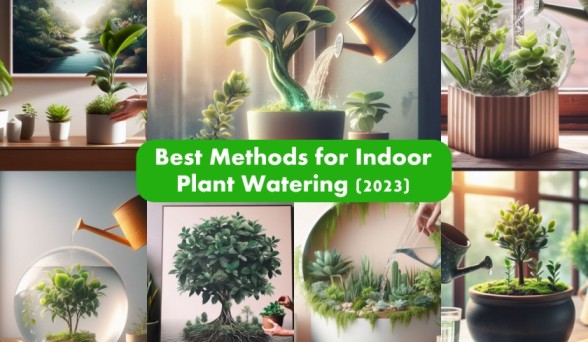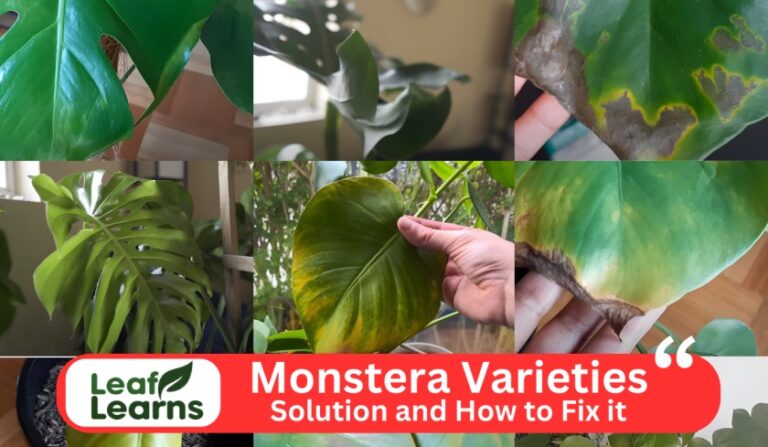12 Reasons Why are My Spider Plant Drooping? (2024)
Overwatering or underwatering is often regarded as the cause of spider plant drooping. Soil that is constantly too wet can cause suffocation of roots, which results in wilting and drooping leafs.
Besides the visual appeal, spider plant drooping affects the overall well-being of the plant. In very wet conditions, drooping for a long time can cause root rot that prevents the absorption of nutrients and the plant is structurally weakened.
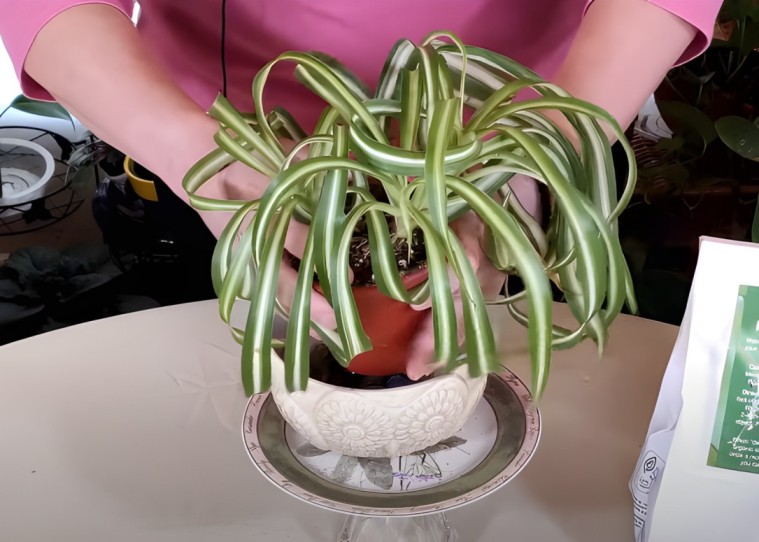
On the contrary, drooping caused by underwatering can lead to stunted growth, diminished vigor and higher risk of infestations. It is vital to eliminate the underlying causes immediately so as as to revivify the plant and maintain it bushy with bend foliage.
Contents
Why are My Spider Plant Drooping
There are many reasons for spider plant drooping. We will discuss the reasons.
Overwatering
The sight of your lively spider plant drooping is disappointing, Overwater results in root rot, hence limiting the uptake of nutrients by the plant. The extra moisture leads to roots suffocation and rotting the leaves wither down.
How to Fix It
Should your spider plant display signs of overwatering in the form of droopy leaves and wet soil, act quickly. Wait for the soil to dry out before watering it again.
Provide moister only when the top inch of soil is dry. Well-draining soil repotting will help save the plant. Trim any roots that are damaged and prune away any leaves that look affected.
Underwatering
Are your happy spider plants looking slightly dejected with drooping leaves? The perpetrator may be underwatering, one of the most common problems that can render your green fellows dry.
Spider plants are relatively hardy but require regular watering to flourish. A feeling of dryness when the soil is touched means they are dehydrated.
How to Fix It
Watering Routine: Provide regular watering, ensuring that the soil begins to dry before each watering. Shoot for once a week, taking into consideration the requirements of your plant and other natural variables.
Watering Technique: It is also important to ensure that when watering, the water penetrates to the roots by ensuring a soaking of soil through and through. Remove any excess water, thereby eliminating conditions that are too wet.
Moisture Check: Soil moisture should be checked regularly by pressing your finger into the top inch. If it feels dry then one must have drink.
Lack of nutrients
The spider plant is known for its ability to get by even in the harshest conditions, A lack of nutrients is one of the most prevalent reasons why spider plant leaves droop.
Yet these green beauties are voracious eaters, and a nutritional deficiency can have serious effects on their lives.
How to Fix it
This can be corrected by supplying a balanced liquid fertilizer that is specially formulated for houseplants every 3-4 weeks during the growing season.
Ensure that the fertilizer is diluted so as not to overfeed, causing other problems. Use a high water-soluble quality fertiliser with an N-P-K ratio for houseplants, e.g., 10-10-10. It should be mixed to the package directions, which may vary between one-half and one teaspoon per gallon of water.
Sprinkle this nutrient solution very delicately on the plant, making sure all areas are well taken care of. Repeat every three weeks or so, and soon those once-limp leaves will regain their vigor.
Incorrect Soil Mix
If your spider plant drooping, its health may be weakened somewhat due to faulty soil mixtures. Spider plants grow well in well-draining soil, and a heavy or compacted loam may cripple them.
If your plant is not doing well, take a look at the soil composition. Excess water in heavy soils causes root rot and drooping leaves.
How to Fix it
First, you can revive your dying spider plant by improving the soil. Repot it in a well-balanced mixture of peat moss, perlite, and potting soil.
This mixture helps to ensure that there is perfect drainage in eliminating waterlogged roots. The next water should be applied only after the top inch of soil has become almost dry.
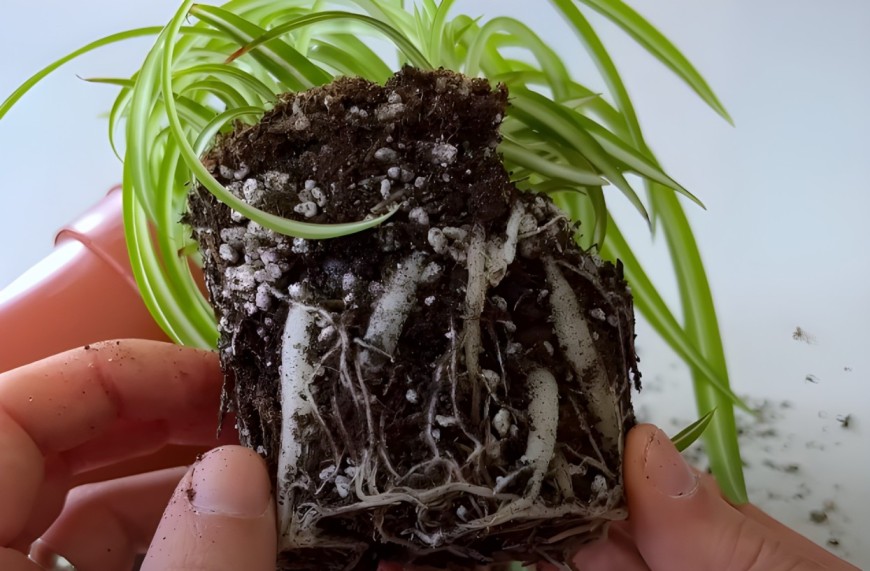
Poor Drainage
The sight of your once vibrant spider plant drooping can be discouraging but, a common cause of this problem is poor drainage.
In case there is inadequate drainage, the roots become waterlogged and this puts stress on your spider plant. The problem is aggravated when overwatering occurs due to the fact that excess moisture promotes a growth environment for root rot.
How to Fix It
In order to mitigate drainage problems, begin by providing well-draining soil for your spider plant. Care for it by repotting using potting soil and perlite or sand mixture to improve drainage.
Good drainage holes in the pot are also essential. Also, keep an eye on how you water; let the soil dry out in between so that overwatering does not take place.
Insufficient Sunlight
If your once vibrant spider plant has now assumed a downcast mood, it could be that it is sending an SOS message because of insufficient light.
These sturdy green cohorts do well under bright indirect lighting conditions. If they do not receive this necessary element, they might droop as a cry for more sunlight.
However, spider plants are the lovers of sunlight and insufficient light affects their general health making them soft on leaves.
How to Fix It
It is as easy as placing your browning spider plant in a location with more sunlight. Slowly acclimate it to an environment with less direct sunlight that does not have harsh rays.
Rotate the plant so that both sides receive sunlight. If there is not enough natural sunlight, it might be necessary to provide several light sources such as fluorescent bulbs.
Low Humidity
The appearance of the drooping spider plants leaves could disappoint a person, and one can ask a question “Why are my spider plant drooping?” The answer to this problem may be low humidity.
As natives of tropical environments, spider plants grow best in relatively humid conditions. But when the air is too dry, these plants suffer or droop their leaves.
How to Fix It
In order to save your dying spider plant, you can try raising humidity levels around it. Moisture levels can be easily increased by regular misting or placing a tray of water near the plant.
The plants can also be grouped or a humidifier used. As an additional precaution, ensure that the soil is moist at all times but not waterlogged.
Pests
If you see your favorite spider plant drooping it may prove to be quite discouraging, but many times this is caused by pests.
These hardy indoor plants may be attacked by unwelcomed house guests like spider mites or aphids and suffer stress, which wilts away the leaves. With pests, the plant loses its nutrients and discourages these factors of vitality that are clearly visible in physical appearance.
How to Fix It
To address this challenge, one must begin by observing the plant periodically to determine pests. If you notice them, a gentle scrub with soapy water can help eliminate such intruders.
A natural remedy includes neem oil that can repel pests without killing the plant.
Environmental stress
While it is disappointing to find that a previously lively spider plant has wilted, environmental stress tends to be the major factor. Factors such as poor lighting, inconsistent watering or high temperature might cause your spider plant to look droopy.
Lack of proper lighting disrupts photosynthesis causing frail stems that cause the leaves to droop. The plant’s turgor pressure can also be blamed on overwatering or under-watering.
If the environment is either too hot or too cold, the plant may not be able to maintain its typical turgidity which will make it look saggy.
How to Fix It
- Evaluate Lighting: Provide the spider plant with moderate indirect light. If indoors, position it by a window that is bright but not too bright.
- Watering Tips: Follow a regular watering routine, letting the soil dry somewhat between applications. The frequency should be altered depending upon the demands of the specific plant.
- Temperature Control: Maintain temperatures in the range of 55 °F to 80 °F (13°C-27°C) for your spider plant. Avoid sudden temperature fluctuations.
Root Bound
If your once cheerful spider plant sags and droops, the problem may be a rather common one called “root bound,” which means that the roots have outgrown the container restricting growth and absorption of water.
When the roots twist around the pot, they become entangled whereby the plant cannot absorb the necessary nutrients and water leading to leaf drooping.
How to Fix It
- Transplanting: Carefully take it out from its present pot, separate the roots and replant it in a newer large size container filled with fresh soil that is well-draining.
- Root Pruning: If a larger pot is not available, root pruning should be done. Remove the root circle for better growth.
- Watering: Make sure your spider plant gets enough water, but don’t overwater. Water the soil when it has dried a little between watering stages.
Root Rot
Do you notice that your lively spider plant withers and becomes droopy? A frequent perpetrator of sagging spider plants is root rot. It happens when the roots are over-watered so they rot and kill the plant in general.
This problem might stem from overwatering or bad-draining soil, and it requires quick efforts to solve the underlying issue.
How to Fix It
Assess Soil Moisture: Make sure the soil is well-draining and not wet. Spider plants love damp soil, but they hate standing water.
Adjust Watering Routine: It is advisable to leave the top inch of soil dry before watering again. The spider plants need a timely watering cycle.
Repotting: If the root rot is extensive, try potting your spider plant in new highly aerated soil. Remove any affected roots during the process.
Increase Air Circulation: Ventilate around the plant to prevent fungal development. Air circulation helps prevent moisture build-up.
Inappropriate Temperature
Because there is a cry for help, your once-perky and vibrant spider plants might have droopy leaves. Poor temperature conditions are one of the most common causes of spider plant drooping.
Such robust plants are accustomed to moderate climates, cold or heat beyond their normal levels causes stress. In high temperatures, the soil can dry out rapidly leading to dehydration and drooping.
How to Fix It
To resuscitate the spider plant, it could be transferred to an area with constant temperatures and away from drafts and direct sunlight. When exposed to heat, raise humidity by misting the plant or placing a water tray nearby.
On the contrary, protect the plant from cold breezes; keep it warm. Make sure to check soil moisture and change watering as needed.
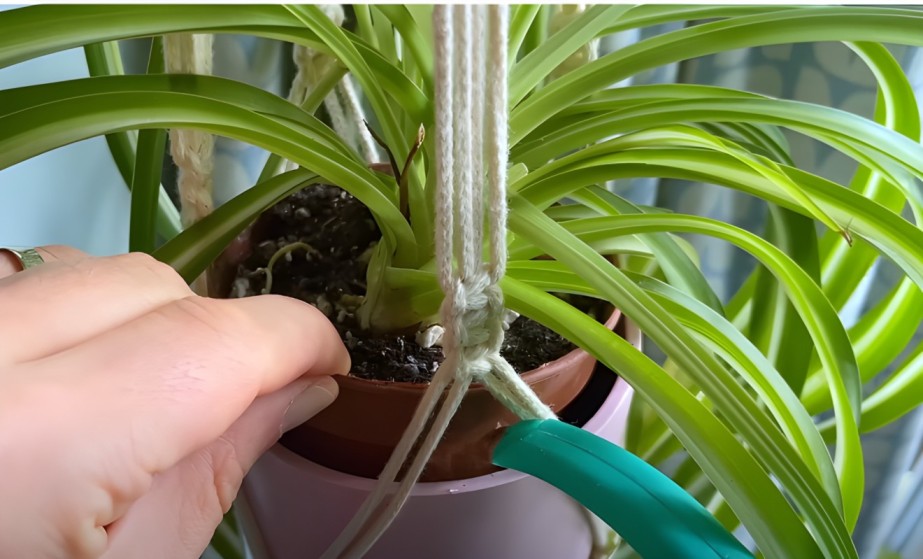
Spider Plant Drooping after repotting
After being repotted, spider plants may droop as a result of transplant shock, which is a typical reaction to having their roots disturbed.
By giving the plant enough water, indirect light, and time to adjust to its new surroundings, this transient state may be reduced to the least. The spider plant should recuperate and start growing again in an upright, healthy manner with the necessary care.
Spider Plant Drooping after watering
If the soil around spider plants is constantly kept overly wet, the plants may droop after being watered. The plant may become limp and lose its turgidity as a result of root rot brought on by overwatering.
To fix this, make sure sufficient drainage is in place to avoid wet circumstances and let the soil dry out in between watering sessions. For drooping spider plants, adjusting the frequency of watering works wonders.
Is My Spider Plant Dead?
Fear not, plant parenthood comrades! Before you jump on the compost pile, though, let’s play some detective. Here’s how to diagnose what’s ailing your spider plant and, hopefully, bring it back from the brink:
Droopy Spider Case
- Underwatering: The most likely suspect is this. Put your finger in the soil – if it’s dry as a bone, you should have probably watered more. Water your plant well and see it revive.
- Overwatering: Ironically, another cause of death is excess water. Telltale signs include soggy soil and yellowed leaves. In well draining soil, water when the first inch of topsoil is dry.
- Light Issues: Spider plants require bright, diffuse lighting. If the plant receives insufficient light, its growth will be weak with pale leaves and too much heat from direct sunlight will scorch the foliage. Find a happy medium!
- Pests and Diseases: The spider plant can be smashed by aphids, mealybugs, and fungi. Monitor your plant frequently and deal with infestation right away.
Revival Re-rooting
- However, if your spider plant is having problems do not despair. Here are some tips to get it back on track:
- Prune away: Dead or diseased leaves should be removed to promote the growth of new shoots.
- Repotting: If the roots are circling on themselves, or if the soil is wet and compressed under pressure, repot in a slightly larger container using fresh sterile well-draining potting medium.
- Boost the humidity: Spider plants love moisture. Water the leaves often, place it near other plants or put a pebble tray underneath.
- Fertilize lightly: During the growth period, a sparing application of fertilizer can aid your plant.
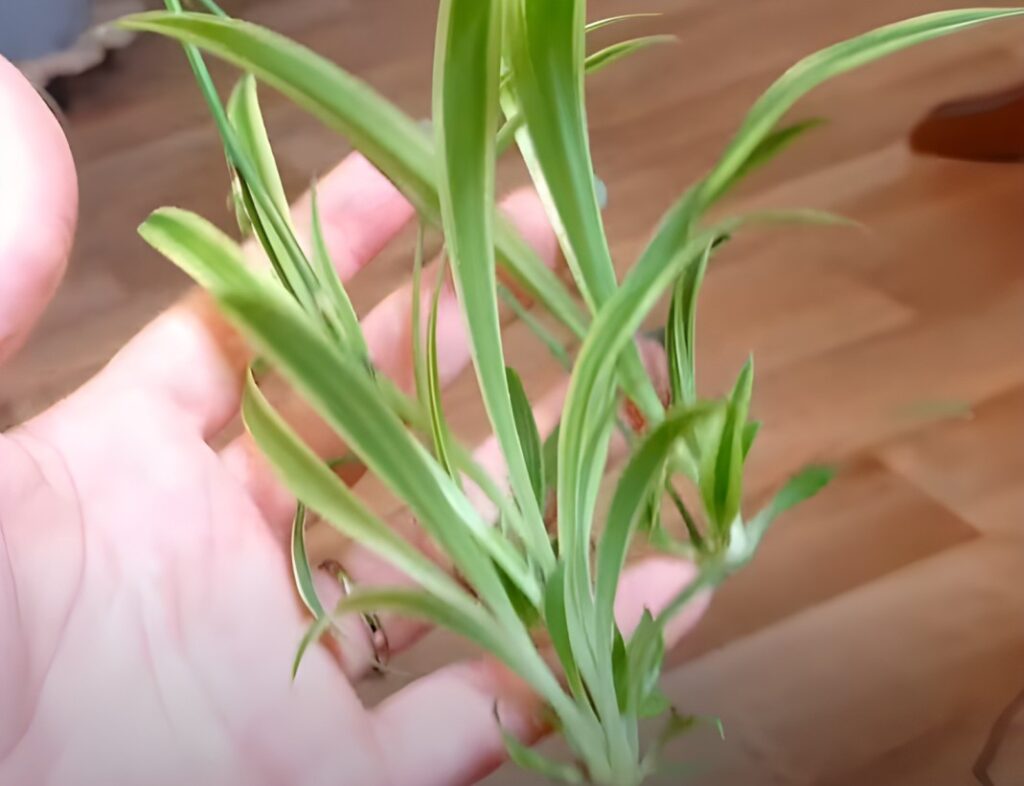
Spider Plant Care: Multilingual Insights, Troubleshooting Challenges
Caring for a Spider Plant involves understanding its specific needs, as reflected in various languages such as “spider plant care,” “spider plant deutsch,” and “spider plant pflege.” Propagation, an essential aspect of Spider Plant care, is also highlighted.
However, challenges often arise, evident in instances of drooping and wilting, including scenarios like “spider plant drooping after repotting” or “spider plant drooping and brown.” Questions like “why are my spider plant leaves drooping” underscore the need for troubleshooting.
Similarly, concerns about decline manifest in queries such as “spider plant dying after repotting” or “spider plant always dying,” indicating the struggle to maintain plant health. Environmental factors like cold-induced wilting (“spider plant wilting from cold”) and specific questions about brown tips (“spider plant brown tips”) or sudden declines (“spider plant suddenly dying”) contribute to the complexity of Spider Plant care.
Beyond individual issues, general references (“spider plant man”) and cultural aspects (“spiderpflanze”) showcase the broad interest in Spider Plants. Numeric references like “spider 18.90” and “spider 22.10” hint at potentially specific measurements or observations.
Finally, commercial elements, as seen in “spider plant price in Pakistan,” point to the economic significance and market value associated with this popular houseplant.
FAQs
How do you fix a droopy spider plant?
Fixing a droopy spider plant involves not overwatering it, using well-draining soil and letting the top inch of soil become dry between waterings. They may also stimulate healthy growth by pruning yellow or damaged leaves.
How do you perk up a spider plant?
Adjust the water intake of a spider plant to perk it up. Let the soil be dry after every watering, give it indirect sunlight and consider using a balanced, water-soluble fertilizer as soon as you plant your vegetables.
Why is my spider plant flopping?
Flopping spider plants may result from overwatering, insufficient lighting, or the root system crowding. Deal with these problems by modifying your watering routine, ensuring sufficiency of sunlight and repotting if roots are cramped.
What causes a Spider Plant’s leaves to droop?
Overwatering, underwatering and low humidity cause the leaves of spider plant to droop. Maintain a balanced watering pattern, remember to allow the soil to dry out between each of them, and consider raising humidity levels to prevent wilting.
Will droopy Spider Plant leaves recover?
Yes, it is possible for droopy spider plant leaves to recover. Regulate watering, cut off affected leaves, and ensure proper care. Over time, the plant should recover its status and grow straight leaves.
How do you fix a droopy Spider Plant?
To revive a droopy spider plant, analyze its water requirements, provide adequate drainage, and modify lighting conditions. Any yellowed or withered leaves need to be removed, and with regular nurture the spider plant should resemble its erect state again.




